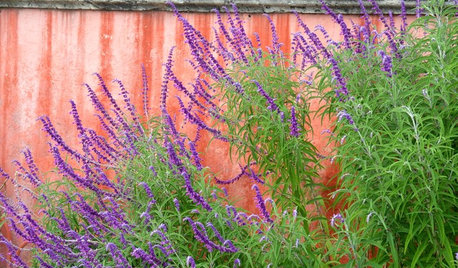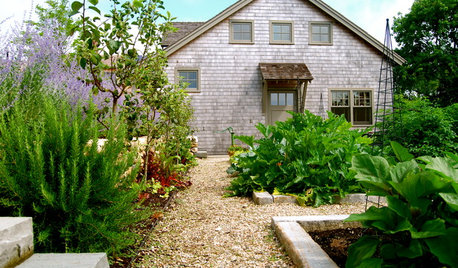Wanting to amend Waco clay!
wacogardener
12 years ago
Related Stories

GARDENING GUIDESHow to Stop Worrying and Start Loving Clay Soil
Clay has many more benefits than you might imagine
Full Story
GARDENING GUIDESGardening Solutions for Heavy Clay Soils
What’s a gardener to do with soil that’s easily compacted and has poor drainage? Find out here
Full Story
WORKING WITH PROSWhat Do Landscape Architects Do?
There are many misconceptions about what landscape architects do. Learn what they bring to a project
Full Story
PLANTING IDEASWant a More Colorful, Natural Garden? Try a Perennial Meadow
Spend less time tending and more time taking in the sights by improving on Victorian and prairie garden designs
Full Story
GARDENING GUIDESGarden Myths to Debunk as You Dig This Fall and Rest Over Winter
Termites hate wood mulch, don’t amend soil for trees, avoid gravel in planters — and more nuggets of garden wisdom
Full Story
LANDSCAPE DESIGNHow to Shape a Rain Garden and Create the Right Soil for It
Learn how to grade, lay out and amend the soil in your rain garden to support your plants
Full Story
GARDENING GUIDESNew Ways to Think About All That Mulch in the Garden
Before you go making a mountain out of a mulch hill, learn the facts about what your plants and soil really want
Full Story
GARDENING GUIDES10 Plants for Colorful Fall Blooms in the Drought-Tolerant Garden
Want fall color but not a big water bill? Consider these not-too-thirsty fall bloomers
Full Story
GARDENING GUIDESThe Simple Secret to Gardening Success
Learn the kinds of soil and a DIY type test to make sure you’re putting the right plant in the right place
Full Story
GARDENING GUIDESHave Acidic Soil in Your Yard? Learn to Love Gardening Anyway
Look to acid-loving plants, like conifers and rhododendrons, to help your low-pH garden thrive
Full StoryMore Discussions







texasflip
PKponder TX Z7B
Related Professionals
Brentwood Landscape Architects & Landscape Designers · Erie Landscape Architects & Landscape Designers · Glen Ellyn Landscape Architects & Landscape Designers · Burlington Landscape Contractors · College Park Landscape Contractors · Florham Park Landscape Contractors · Framingham Landscape Contractors · Hampton Bays Landscape Contractors · La Verne Landscape Contractors · Pahrump Landscape Contractors · Soddy Daisy Landscape Contractors · Fort Collins Window Contractors · Arroyo Grande Window Contractors · Winnetka Window Contractors · Wixom Window Contractorsbossjim1
PKponder TX Z7B
roselee z8b S.W. Texas
roselee z8b S.W. Texas
wacogardenerOriginal Author
shebear
copingwithclay
wacogardenerOriginal Author
copingwithclay
carla morey
wally_1936
merrybookwyrm
wacogardenerOriginal Author
jun_